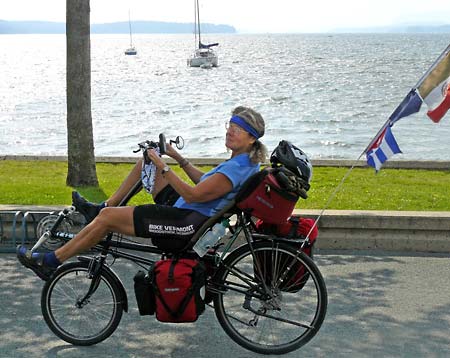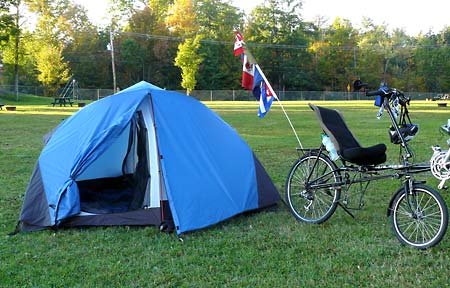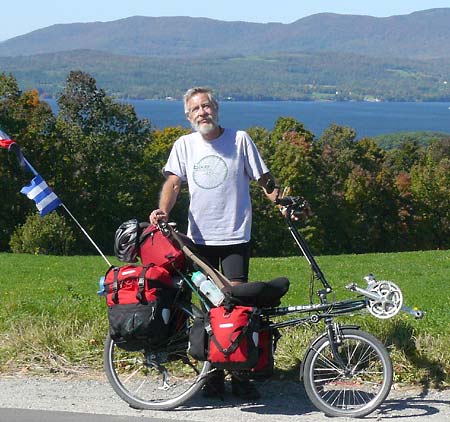Although we are taking a casual approach to route planning, we have been giving a good deal of thought to equipment and preparation. This is Barbara on one of the bikes we are using — Rans V-Rex recumbents. They're not light, and like all recumbents they require patience on long climbs, but we have found them to be wonderfully comfortable and (so far) reliable. And of course we've climbed a good deal with them here in hilly Vermont and also in the Canadian Rockies and Mexico, so we hope to manage in New Zealand.
This photo was taken in September on a short trip we did in the Eastern Townships of Quebec. We wanted to try out some of the new gear we have chosen for the New Zealand tour. We got compact LaFuma summer-weight sleeping bags. They're not really warm enough for the cooler nights we'll sometimes endure in New Zealand, but we'd rather wear extra clothing to bed occasionally than carry unnecessarily bulky sleeping bags for four months. Barb, in a moment of wild extravagance, added silk sleeping bag liners from REI, so they should make the bags marginally warmer. We're also trying some flimsy blow-up pillows.


